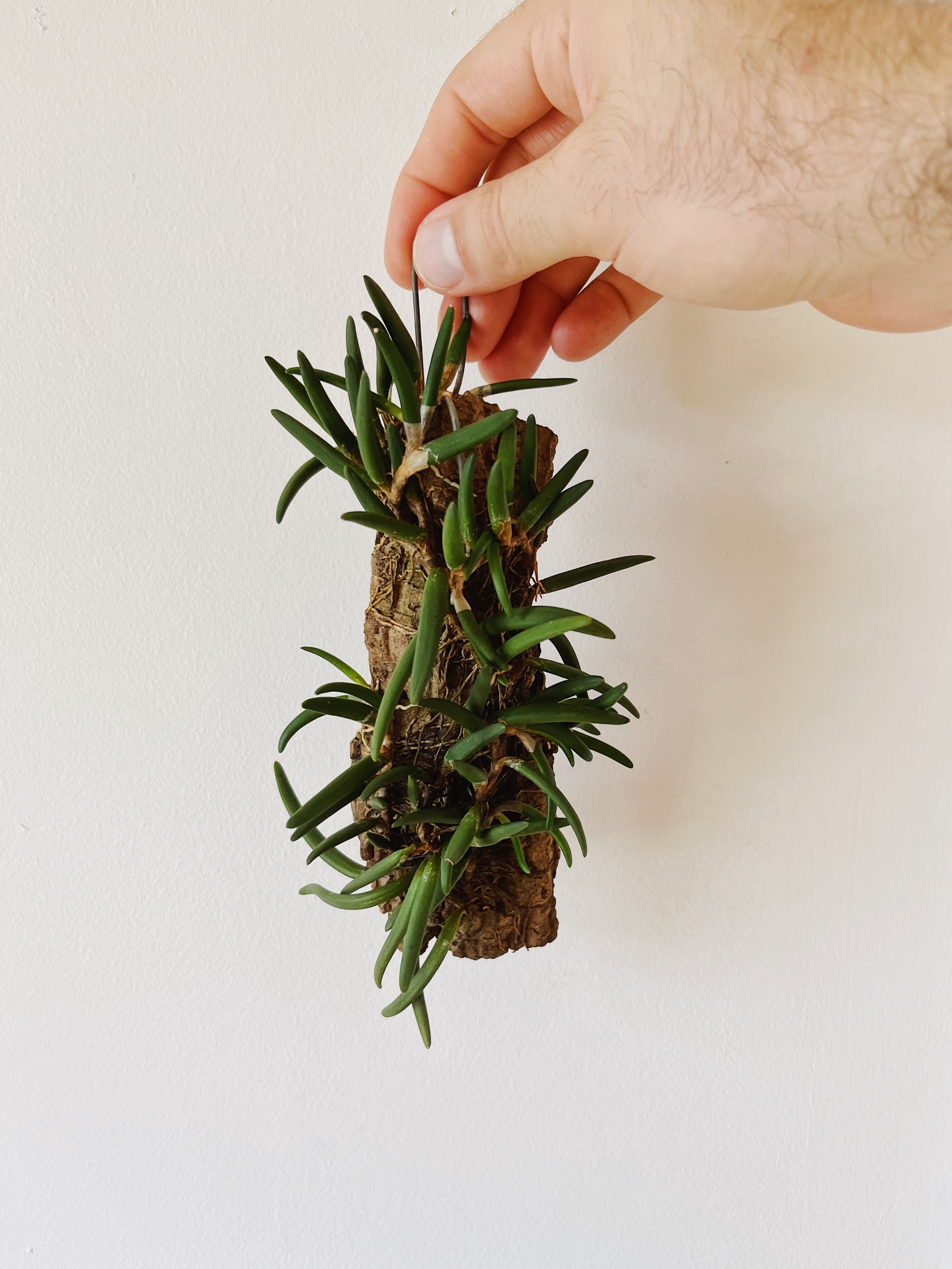An Examination of Epiphytes, Some of the Easiest Houseplants
While the term for these plants may sound complex, chances are that most of us have come across an epiphyte in our plant care journey—and the best news of all, is that most of them are easy-care houseplants.
An epiphyte is any type of plant that grows and lives on the surface of another plant, meaning that these plants grow—in their natural environment—without the presence of soil. In this article, we’ll be taking a look at how epiphytes can grow in nature, what plant families fall into the epiphyte category, how you can grow and display them indoors, and what makes them some of the easiest houseplants to care for.
A Dendrobium prenticei orchid latched onto a piece of cork bark without the aid of a growing medium—this is nearly exactly what these plants would look like when found in nature.
Native Environment & Overview
Epiphytes are abundant mostly in tropical rainforests, where they’re found growing along and inside the nooks of trees, or on fallen logs and other debris. They can also be found in other areas, such as coastal deserts, where they receive their moisture from the surrounding fog, as well as in more humid environments, such as the southern United States.
These plants absorb water from their naturally humid environments, as well as the bountiful rainfall in the tropical forests they reside in. Many of their leaves and stems have evolved over time to store large amounts of water for the plant to make up for the fact that they don’t grow in soil or have a steady supply of water around their roots.
Most epiphytic plants have a pendent growth habit, meaning they naturally trail or cascade down from wherever they’re growing, making for some beautiful displays both indoors and outdoors.
Some examples of epiphytes that are commonly found in indoor collections include Hoyas, Peperomias, Rhipsalis, Epiphyllums, orchids, and certain species of ferns. Air plants (or Tillandsias) are also epiphytic plants in their natural environment, although unlike the others listed here, they will not do well planted in potting mix. All of these plants will have relatively similar care needs, as they grow in near-identical conditions to one another.
Air plants (Tillandsia) growing on trees in Mexico City.
Indoor Cultivation
As mentioned above, epiphytic plants are some of the easiest indoor plants due to a number of reasons: they grow naturally without soil, they are adept at water retention in a similar way to succulents, and they are found beneath the tree canopies, which means they receive filtered light in nature. All of these factors merge together to create the ideal houseplant—one that does not need watered too often and is fine with receiving filtered or medium amounts of sunlight indoors, which is great for those of us who already have limited natural light in our spaces, or other direct sunlight-loving plants taking up precious window real estate.
If you’re growing epiphytic plants in containers indoors, you’ll ideally want to mimic their growing conditions and use a potting mixture that contains soil amendments, such as perlite, pumice, horticultural charcoal, or orchid bark—all of these will create additional air pockets in the soil that allow for water to flow through freely and drain quickly. Since these types of plants aren’t accustomed to having water sit around their roots, heavier soil mixtures can increase the likelihood of root rot in epiphytic plants. The potting mix you use should—for most of these plants—dry out nearly completely between waterings.
When cultivating epiphytic plants indoors, there is another option for displaying them: mounting them on pieces of cedar or cork wood with sphagnum moss wrapped around their roots. This cultivation and growing method will closely mimic how these plants grow in the wild, with the sphagnum moss acting as the perfect growing medium—sphagnum moss is able to absorb water effectively, but it will dry out swiftly, which again emulates their conditions in nature. If you decide to go this route with growing and displaying your epiphytic plants, it’s important to keep in mind that by itself, sphagnum moss is nutritionally deficient and your plant will require more frequent feeding with a liquid fertilizer. Besides being an effective and unique way to grow plants, hanging mounted plants is a great option to get some greenery on your walls and create a stunning display.
If you have any questions regarding epiphytic plants, feel free to ask down below, visit one of our shops, or get in contact with us!
Words by: Egan Thorne
Photos by: Egan Thorne & Rachelle Levine
A collection of epiphytic plants, with most of them growing in planters—featured plants from left to right include: Procatavola ‘key lime stars,’ Tillandsia espinosae, Rhipsalis cereuscula, and Dischidia ovata.



